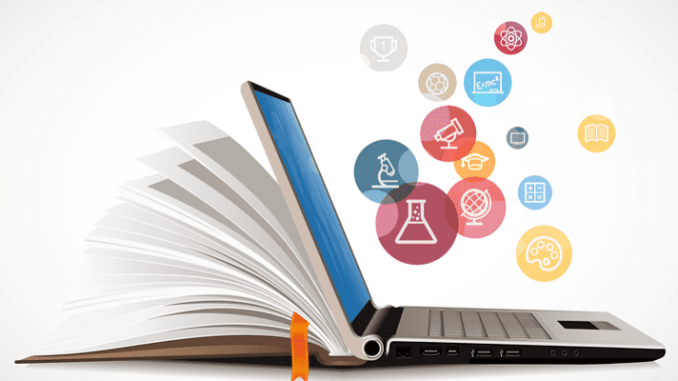
As technology advances, so does the outlook for teachers in an age marked by more and more sophisticated digital tools. Educators are now pressed to keep up with current developments while still honing their own abilities and skills. Professional development for teachers in the digital age is successful through creative outlets beyond traditional workshops and lectures. This article aims to look at how current trends and technologies are bringing radical changes into teacher training so that the educators of tomorrow can work effectively in modern-day schools.
Multiple Learning Paths Being Crafted for Teachers
In the classroom teacher training of today, individualized learning is already an established mode for students learning. new professional development courses aimed tailored to en teacher needs are now being put in place. Teachers can therefore devise for themselves plan how to conduct their course topics, or they may reconstruct past methods to suit the different instruments provided to them now.
Schools can help by promoting the practice, and teachers can sign up for these certificates in line with their own present and future goals. (This sentence has been changed for correct meaning.)
Small Certificates and Small Signs
The dawn of micro-credentials and digital badges has completely transformed teachers’ certification board. Instead of long-term programs, teachers can attend specific courses which upon completion will certify their competence in areas such as the appropriate use of technology for instruction and distance education, or special education handicaps.
Recognition of these small certificates is not just faster than it used to be: it also extends the idea of lifelong learning. When a new type of badge brings a new set of knowledge people quickly see, “How elegant it is and intuitive.”
Virtual and Blended Professional Development for Teachers
More information on extension of this model In the era of COVID-19, virtual as well as blended educational models have seen great advances. This transformation has affected the field of teacher training too. Virtual professional development (PD) sessions, webinars, and online workshops are now the norm for schools and districts offering staff training courses. The versatility of these various formats–seen as they can be anytime throughout the year and anywhere in the world–has done away with traditional fixed-point offerings. In the past teachers had to go to specific locations where their associations sponsored them to attend seminars in person or pay their own travel costs abroad for international conferences.
More importantly, blended PD makes room for face-to-face workshops and Web elements to interact in new, more constructive ways. Through such programs, teachers can immediately put their fresh techniques into real-life practice listen with others for feedback or advice (and offer these services themselves if they are experts too) All this makes more opportunities for interaction and combined learning arise.
Mentorship and Professional Learning Networks
The extension of this section concentrates on just that remark In recent years, one major trend in teacher professional development has been the increasing emphasis on peer collaboration and mentorship activities. These moves have been facilitated by digital platforms for teachers to exchange their experiences, lesson plans, and success stories. An online community of practice like Facebook groups or in the domain of education such as Edutopia will enable any teacher anywhere around the world to share great resources to listen to helpful teachers that they can’t ever meet in person because they’re distant learners at universities etcetera.
Mentorship is also going online. Platforms like TeachBoost and BloomBoard offer formal programmes in which experienced educators guide newcomers virtually through coaching sessions. Often these platforms employ video conferencing and collaboration tools, enhancing the flexibility of mentoring and allowing it to bridge different countries.
Focusing on EdTech and Digital Literacy
It started at the beginning at first, before information began to flood classroomsAnd so as classrooms incorporate more technology, teachers have to prepare students in at least elementary school for their familiarity with modern tools. Training on age appropriate educational technologies such as learning management systems (LMS), interactive whiteboards and data analysis tools-charting student progress are now put into the professional development curriculum.
With the entry of information technology, teachers have the new opportunity to keep their teaching skills good and–following web-based professional development set by precedent. They will thus have knowledge on things like multimedia slide functions and held entirely online courses. Computers and internet access are introduced together in schools for the most part in such an abrupt fashion that students soon teach themselves how to use computer technology.
It remains just this for information technology now in all parts of the educational system change the fact students can compare Gregorian chants with postmodern music and so help them acquire skills of critical consciousness; only in this way is a necessary foundation for aesthetic education established.
Furthermore, since the field of high-tech information is available for the first time to all—even children will have to learn to manipulate it. The necessities of computerization responsible for giving birth to a software industry will also create new jobs: and so it is imperative that teachers be trained, because these new nuggets must be provided for.
The Conclusion
In the digital era, teacher education is no longer something that is done only on occasion when the need arises or one fixed program applies to everyone. Personalization, micro-credentials, virtual collaboration and data driven methodologies for teaching – these mark shifts away from traditional ways of professional development Cramming all of these techniques into only the most perfect and most lasting mold means that teachers can keep up with technological change both by upgrading their knowledge and adding to it at the same time this way not only thereby benefitting themselves but also bringing about better learning results for students, overall.

Leave a Reply